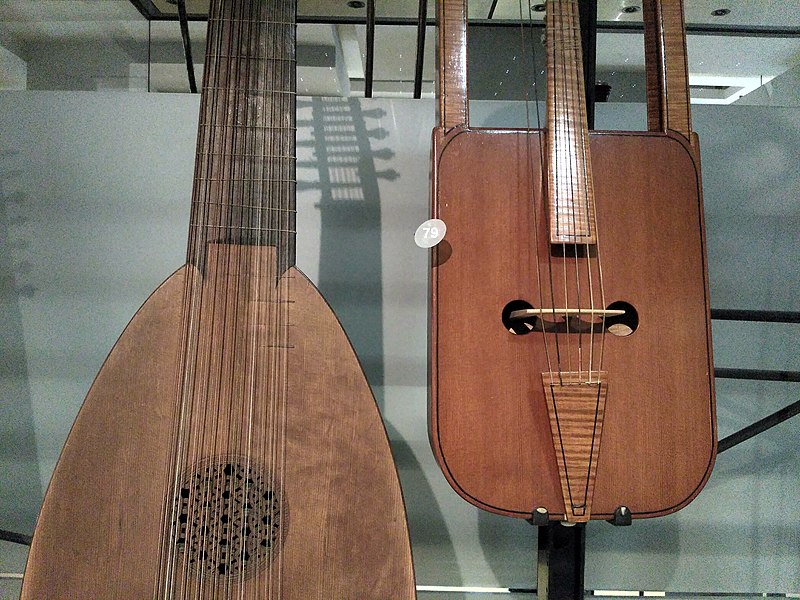
Photo by Jo Dusepo, via Wikimedia Commons
Henry Wadsworth Longfellow’s description of music as a universal language has become a well-worn cliché, usually uttered in a sentimental and not particularly serious way. Maybe this is why it doesn’t inspire a corresponding breadth of appreciation for the music of the world. We are conditioned and acculturated, it can seem, by formative experience to gravitate toward certain kinds of music. We can expand our tastes but that usually requires some careful study and acculturation.
In the sciences, the “universal language” hypothesis in music has been taken far more seriously, and, more recently, so has its critique. “In ethnomusicology,” notes the Universitat Wien’s Medienportal, “universality became something of a dirty word.” The diversity of world music is profound, as Kevin Dickinson writes at Big Think.
Katajjaq, or Inuit throat singing, expresses playfulness in strong, throaty expressions. Japan’s nogaku punctuates haunting bamboo flutes with the stiff punctuation of percussion. South of Japan, the Australian Aborigines also used winds and percussions, yet their didgeridoos and clapsticks birthed a distinct sound. And the staid echoes of medieval Gregorian chant could hardly be confused for a rousing track of thrash metal.
The idea that all of these kinds of music and thousands more are all the same in some way strikes many as “groundless or even offensive.” But even hardcore skeptics might be persuaded by papers published just last month in Science.
University of Vienna Cognitive Biologists W. Tecumseh Fitch and Tudor Popescu begin their article “The World in a Song” with a brief sketch of the history of “the empirical quest for musical universals.” The search began in Berlin in 1900, almost as soon as phonographs could be used to record music. The Nazis stamped out this research in Germany in the 1930s, though it flourished in the U.S.—in the work of Alan Lomax, for example. Yet “by the 1970s ethnomusicologists were discouraged from even discussing musical ‘universals.’ ”
Nonetheless, as a team of researchers led by Harvard’s Samuel Mehr show in their paper “Universality and Diversity in Human Song,” there are indeed universal musical qualities, though they manifest in some specific ways. Using the “tools of computational social science” to analyze a huge archive of audio recordings of world music, the researchers found that “identifiable acoustic features of songs (accent, tempo, pitch range, etc.) predict their primary behavioral context (love, healing, etc.).” Societies around the world use similar musical properties to accompany similar emotional contexts, in other words.
Moreover, the meta-analysis found that “melodic and rhythmic bigrams fall into power-law distributions” and “tonality is widespread, perhaps universal.” Focusing primarily on vocal song, since instrumentation varied too widely, the scientists tested “five sets of hypotheses about universality and variability in musical behavior and musical forms.” All of these analyses make use of ethnographic data. Critics might point out that such data is riddled with bias.
Ethnographers, from the purely academic to popular curators like Lomax, applied their own filters, choosing what to record and what to ignore based on their own assumptions about what matters in music. Nonetheless, Mehr and his co-authors write that they have adjusted for “sampling error and ethnographer bias, problems that have bedeviled prior tests.” Their methodology is rigorous, and their conclusions are backed by some dense analytics.
It would indeed seem from their exhaustive research that, in many respects, music is genuinely universal. The findings should not surprise us. Humans, after all, are biologically similar across the globe, with generally the same propensities for language learning and all the other things that humans universally do. Many previous comparative projects in history have used generalizations to create racial hierarchies and attempt to show the superiority of one culture or another. “Universality is a big word,” said Leonard Bernstein, “and a dangerous one”—a word beloved by empires throughout time.
But the data-driven approach used by the most recent studies adheres more closely to the science. Wide variation is a given, and several indicators show great “variability across cultures” when it comes to music, as the introduction to “Universality and Diversity in Human Song” acknowledges. Nonetheless, forms of music appear in every human society, accompanying ceremonies, rituals, and rites. Echoing the conclusions of modern genetics, the authors point out that “there is more variation in musical behavior within societies than between societies.” Read Mehr and his team’s study here.
via Big Think
Related Content:
Why Catchy Songs Get Stuck in Our Brains: New Study Explains the Science of Earworms
Josh Jones is a writer and musician based in Durham, NC. Follow him at @jdmagness


As a musician, not a scientist, my experiences are personal, but definitely demonstrate the correctness of Mehr’s proposition. I was raised in a musical household, but one that pretty much stopped listening to any western music written after about 1910. For my mother, Prokofiev was over the edge. However, we listened frequently to South Asian music (of all types) and South American folk music. For me, western “classical” music and South Asian music feel like home; pop music of any type is uninteresting and discordant. Why? It’s what I personally know.
Another short anecdote: my husband and I traveled on our own through southern China in 2012, accompanied at times by a guide. She took us to the small town where she was raised and we dropped by the elementary school she’d attended. The kindergarten class was just finishing for the day, and the kids decided to sing us a song — in Chinese (Mandarin) of course. The tune was “Twinkle, twinkle little star”, so we joined in with our words. The children were astonished that these western strangers knew their Chinese song. So was the song western or Chinese? What determines that? The words? The tune?